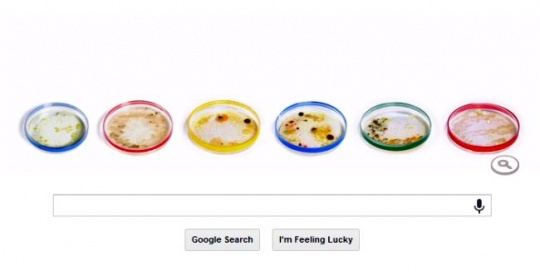Petri Dish Google Doodle – Julius Richard Petri
Petri Dish Google Doodle
On May 31st 2013 a fully animated Doodle was created to celebrate the one hundred and sixty first birthday of the world famous German bacteriologist Julius Richard Petri. Born in Barmen, Germany in 1852, Petri received his degree from Berlins Kaiser-Wilhelm Academy for military physicians in 1876. According to his biography he then joined a medical research facility known as Kaiserliches Gesundheitsamt, where he was a lab assistant to Robert Koch. It was here where his interest in microbiology blossomed.
Petri is best known for his invention of the Petri Dish, a round, shallow dish with a flat bottom and vertical sides made out of either glass or plastic. The Petri Dish is widely used in biological studies. More specifically Petri Dishes are used in microbiological studies to culture (grow) bacteria in a controlled environment. This procedure is done for study purposes.
Julius Richard Petri dedicated his life to microbiology. His work includes contributions to industrial hygiene, and in-depth studies into the spread of contagious diseases, via public transport. His final contribution to microbiology came in determining the water content in milk. Thanks to Petri we know that milk is in fact 87% water.
The Petri Dish Google Doodle featured six Petri Dishes coloured to match the colour scheme of the Google trademark. When a user clicked the play button on the Doodle, a hand appeared and swabbed each of the dishes. Subsequently bacteria grew from the dishes in the shape of the word “Google”. After which users could place their cursor over each dish to see what samples were collected. The samples included: a smelly sock, a doorknob, a keyboard, a dog, a flower in a rainy garden and a sponge.
Prior to Petri’s invention, as noted in Encyclopaedia.com, bacteria was cultured in liquid broth. The page continues, “In an effort to devise a solid medium, Koch experimented with slabs of gelatine positioned on glass or inside bottles. Petri realised that Koch’s idea could be realized by pouring molten agar into the bottom of a dish and then covering the agar with an easily removable lid.” With the exodus of the Petri Dish, scientists were provided with a device which enabled them to effectively monitor and study bacterial samples in labs.
Julius Richard Petri died in 1921, in Zeitz, Germany.


